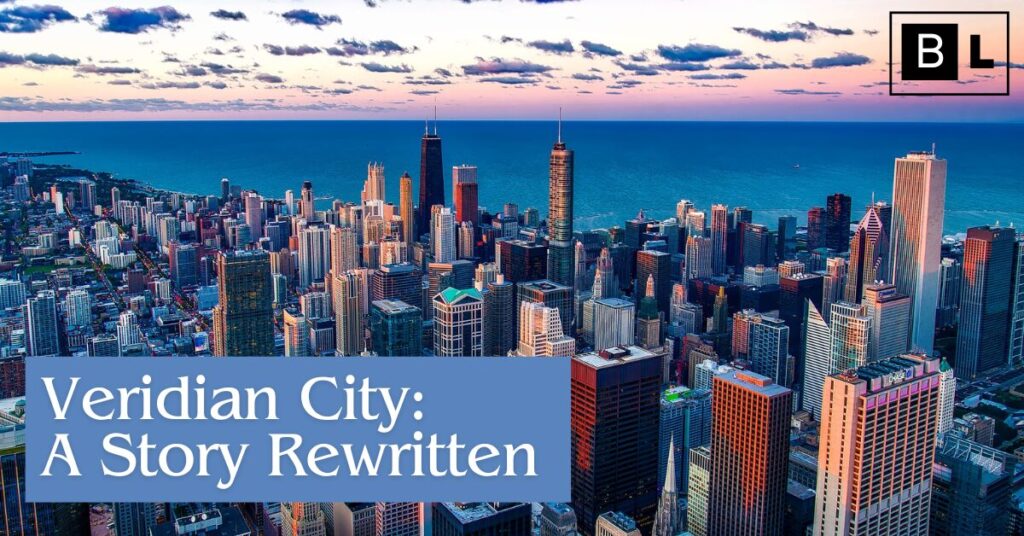I’ve been deeply intrigued by Gene Bellinger’s new storytelling approach to systems thinking. And yet… I also find myself wrestling with something. Not as a critique, but as a further exploration: what draws non-systems thinkers into a story? I suspect it’s not just clarity, but complexity. Not just answers, but tension. So I took his story, “The Green Heart of Veridian,” and asked ChatGPT to rewrite it based on five ideas I have about complexity. Not a critique — more a curiosity: What makes a systems story resonate with people not trained in systems thinking?
Would love your thoughts on the new story below…
Veridian was a city like many others — full of contradictions, beauty, and noise. The air wasn’t perfect, but most days you could still see the sky. Some neighborhoods were tightly knit, others anonymous. People were hustling, surviving, building. Traffic was bad, but not apocalyptic. Parks were scattered, but not extinct. It was a city alive in its own peculiar balance — imperfect, in motion, and not waiting for permission to change.
For years, Anya had trained in system mapping, drawing loops and causal flows with precision. She believed — earnestly — that if only people could see the system, they’d act differently. But time and frustration taught her a quieter truth: systems are not puzzles to be solved, but environments to be felt. Most people already knew what they needed — they just couldn’t feel the feedback clearly. And the more she tried to design the future, the more her maps reflected her preferences, not the city’s possibilities.
So she stopped mapping everything. Instead, she picked one problem: a stalled bus route near a busy neighborhood where kids walked along narrow roads to school. She didn’t pitch a vision. She just organized a trial: a cheap shuttle, no fanfare. It filled up fast. Ridership data flowed. People talked. Complaints and praise rolled in. Adjustments followed.
That’s how the change began — not from top-down design or civic awakening, but from local friction and response. People didn’t need to be told what was better. They just needed room to feel what worked. The buses grew cleaner and more frequent not because someone declared a green revolution, but because enough commuters ditched their cars — voluntarily. Not because they were taught to, but because it saved time and money.
And as congestion thinned, something interesting happened. Property values in walkable corridors rose. Small businesses reopened near new stops. Developers adapted without being told. The system adjusted. Even critics of “public investment” quietly appreciated the smoother traffic and fresh foot traffic near their shops.
Parks expanded next, but not through sweeping reform. One developer added a small green space to attract tenants. A church tore up its parking lot to plant trees. No grand strategy — just decentralized experiments, some failing, some catching on.
Old Mr. Henderson started coming to a community market by accident. He never joined a campaign or read a brochure. He just followed the noise one Saturday, found a bench, and returned the next week. When asked, he shrugged: “It’s better than staying inside.” No one engineered his re-entry into society. The system gave him space, and he took it.
Years later, Veridian looked different. Not utopian. But clearer. The city had let some things break — traffic, budgets, habits — and had refused to hide the pain. No nudges. No “awareness campaigns.” Just the logic of action and consequence. That discipline created trust.
Anya kept reminding herself: evolution is smarter than design. She’d read Taleb. And Smith. And others who warned against centralized visions dressed up as good intentions. It wasn’t about pushing a better loop. It was about letting loops reveal themselves, in behavior, in pain, in course correction. She resisted the urge to protect the system from discomfort — just like a parent who lets a teenager miss a deadline and deal with the fallout.
There were still problems. Always would be. Politics got weirder. Climate headlines got bleaker. But asthma rates, she noticed, were down — not just in Veridian, but globally. She kept that stat on a post-it. Not to brag. Just to remember: progress is real, even if uneven. The world had been through worse. It would rise again, not because someone charted the way, but because people learned, adapted, and acted.
Veridian didn’t become a green marvel. It became something rarer: a city that learned by doing — and let its people feel the system, not just see it.



